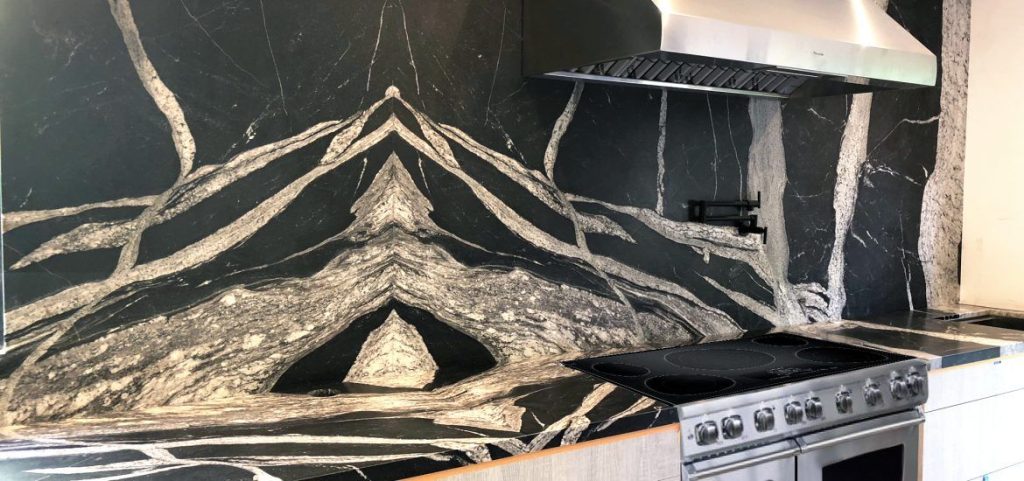When designing a kitchen, one of the key decisions you’ll face is choosing the right backsplash to complement your countertop. This choice can significantly impact the overall aesthetics of your kitchen. A common dilemma is whether the backsplash should be lighter or darker than the countertop. Both options have their advantages and can create distinct visual effects. Let’s explore the pros and cons of each choice to help you make an informed decision.
Lighter Backsplash: Creating a Bright and Airy Space
Pros:
-
Enhanced Space Perception: Light-colored backsplashes can make your kitchen appear larger and more open. This is particularly beneficial for smaller kitchens or spaces with limited natural light.
-
Clean and Fresh Look: Light backsplashes, such as white or pastel shades, can give your kitchen a clean, fresh, and timeless appearance. They reflect light, adding to the overall brightness of the space.
-
Versatility: Lighter backsplashes tend to be more versatile, easily pairing with various countertop materials and colors. They provide a neutral backdrop that allows other elements in the kitchen to stand out.
-
Subtle Elegance: A light backsplash can add a touch of elegance and sophistication without overwhelming the space. It creates a serene and calming atmosphere, perfect for modern and traditional kitchens alike.
Cons:
-
Maintenance: Light backsplashes can show stains, splatters, and dirt more easily than darker ones. Regular cleaning is necessary to maintain their pristine appearance.
-
Lack of Contrast: In some cases, a light backsplash might lack the visual contrast needed to create depth and interest in the kitchen design.
Darker Backsplash: Adding Depth and Drama
Pros:
-
Bold Statement: A darker backsplash can create a striking and dramatic focal point in your kitchen. It adds depth and richness, making the space feel more luxurious and sophisticated.
-
Conceals Stains: Darker backsplashes are more forgiving when it comes to stains and splatters, making them easier to maintain and keep looking clean.
-
Contrast and Definition: Dark backsplashes provide a strong contrast against lighter countertops, helping to define different areas of the kitchen and adding visual interest.
-
Warmth and Coziness: Dark colors can create a warm and cozy ambiance, especially in larger kitchens. They can make the space feel more intimate and inviting.
Cons:
-
Space Perception: Dark backsplashes can make a kitchen feel smaller and more enclosed, especially if the space lacks sufficient natural light.
-
Limited Pairing Options: Darker backsplashes may not pair as easily with all countertop colors and materials. Careful consideration is needed to ensure a harmonious look.
Finding the Perfect Balance
The choice between a lighter or darker backsplash ultimately depends on your personal preferences, kitchen size, and overall design goals. Here are a few tips to help you strike the right balance:
-
Consider the Overall Theme: Think about the style and theme of your kitchen. For a contemporary and minimalist look, a light backsplash with a light countertop can create a seamless and airy feel. For a more traditional or eclectic style, a dark backsplash paired with a light countertop can add character and charm.
-
Assess Natural Light: Evaluate the amount of natural light your kitchen receives. If your kitchen is well-lit, you have more flexibility to experiment with darker backsplashes. In contrast, a kitchen with limited natural light may benefit from a lighter backsplash to enhance brightness.
-
Experiment with Samples: Before making a final decision, gather samples of both light and dark backsplashes and hold them against your countertop. This will give you a better idea of how each option looks in your specific space.
-
Create a Focal Point: If you want to incorporate both light and dark elements, consider using a light backsplash for most of the kitchen and adding a darker backsplash behind the stove or sink area as an accent. This can create a balanced and visually appealing design.
There is no one-size-fits-all answer to whether your backsplash should be lighter or darker than your countertop. Both options have their unique advantages and can transform the look and feel of your kitchen. By considering your kitchen’s size, natural light, and overall design vision, you can make a choice that best suits your style and functional needs. Whether you opt for the brightness of a light backsplash or the drama of a dark one, the key is to create a harmonious and visually appealing space that you’ll love for years to come.

